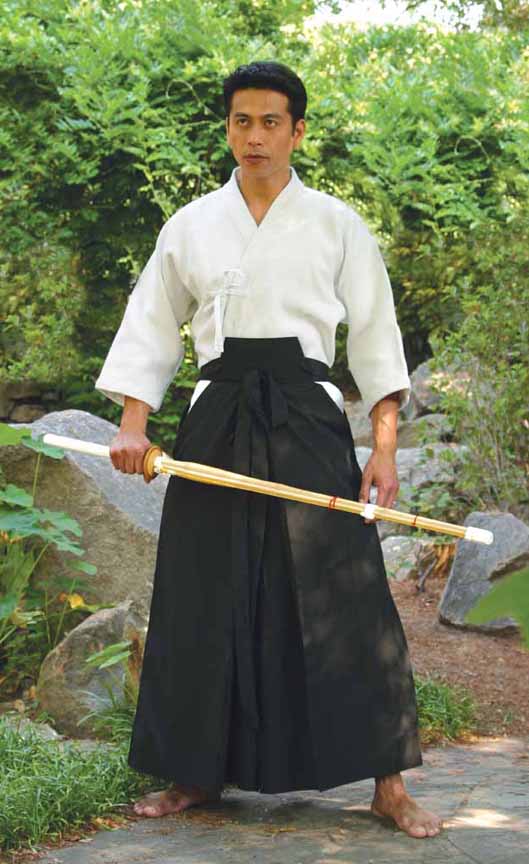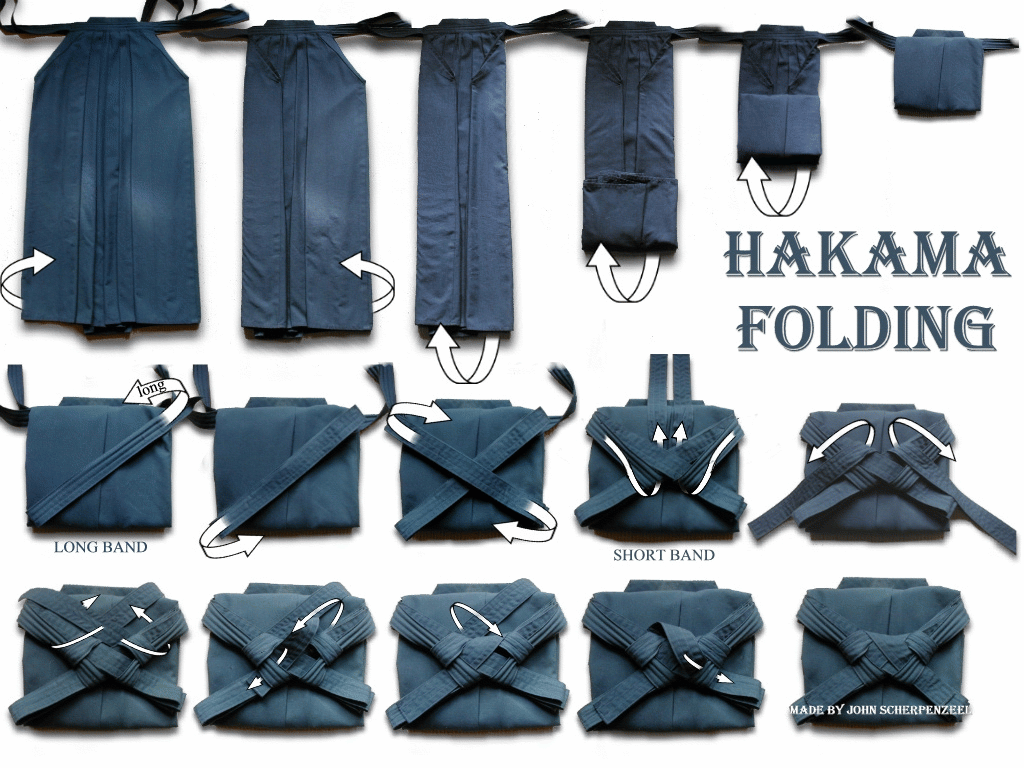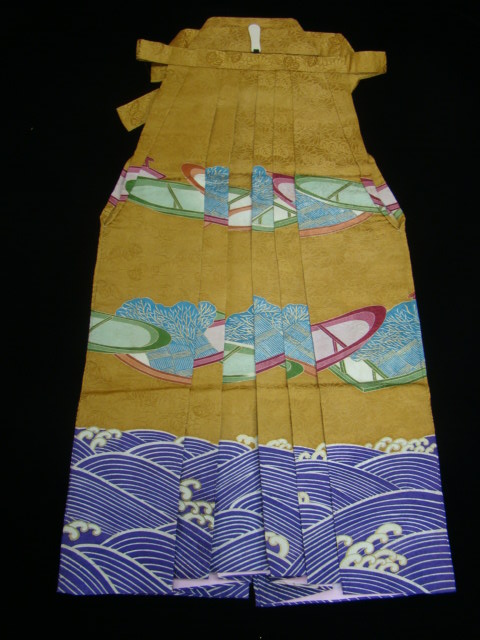Hakama
Akuma would like everyone who visits this page to know that the "kendo practitioner" in the top most picture is wearing his hakama incorrectly. Backwards in fact. And that the Hakama pattern link that leads to round earth publishing is the correct path for your hakama needs.
Hakama (袴) are a type of traditional Japanese clothing. They were originally worn only by men, but today they are worn by both men and women. Hakama are tied at the waist and fall approximately to the ankles. Hakama are worn over a kimono (Hakamashita).
There are two types of hakama, divided (umanori 馬乗り, "horse-riding" hakama) and undivided (andon bakama 行灯袴). The umanori type have divided legs, similar to trousers. Both these types appear similar. A "mountain" or "field" type of umanori hakama, were traditionally worn by field or forest workers. They are looser in the waist and narrower in the leg.
Hakama are secured by four straps (himo); two longer himo attached on either side of the front of the garment, and two shorter himo attached on either side of the rear. The rear of the garment has a rigid board-like section, called koshi-ate, below that is a hakama-dome (袴止め) (a spoon shaped component) which is tucked into the obi or himo at the rear, and helps to keep the hakama in place. Hakama have seven deep pleats, two on the back and five on the front. The pleats are said to represent the seven virtues of bushido, considered essential the samurai way. Although they appear balanced, the arrangement of the front pleats, (three to the right, two to the left) is asymmetrical, and as such is an interesting example of asymmetry in Japanese aesthetics.
The most formal type of men's hakama are made of stiff, striped silk, usually black and white, or black and navy blue. These are worn with black montsuki kimono (kimono with one, three, or five family crests on the back, chest, and shoulders), white tabi (divided-toe socks), white naga-juban (under-kimono) and various types of footwear. In cooler weather, a montsuki haori (long jacket) with a white haori-himo (haori-fastener) completes the outfit. Hakama can be worn with any type of kimono except yukata (light cotton summer kimono generally worn for relaxing, for sleeping, or at festivals or summer outings). While striped hakama are usually worn with formal kimono, stripes in colours other than black, grey and white may be worn with less formal wear. Solid and gradated colours are also common.
While hakama used to be a required part of men's wear, nowadays typical Japanese men usually wear hakama only on extremely formal occasions and at tea ceremonies, weddings, and funerals. Hakama are also regularly worn by practitioners of a variety of martial arts, such as kendo, iaido, aikido, and kyūdō. Sumo wrestlers, who do not wear hakama in the context of their sport, are, however, required to wear traditional Japanese dress whenever they appear in public. As hakama are one of the most important parts of traditional male formal dress, sumo wrestlers are often seen wearing hakama when attending appropriately formal functions.
In addition to martial artists, hakama are also part of the every-day wear of Shinto kannushi, priests who maintain and perform services at shrines.


